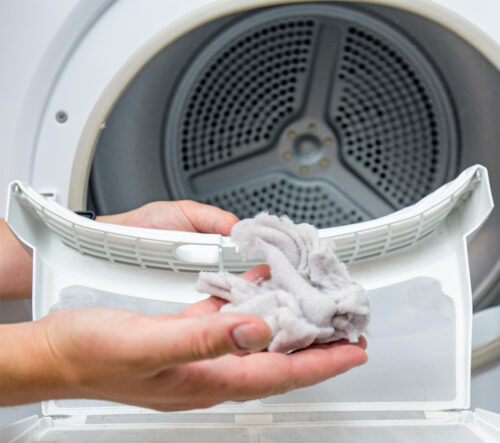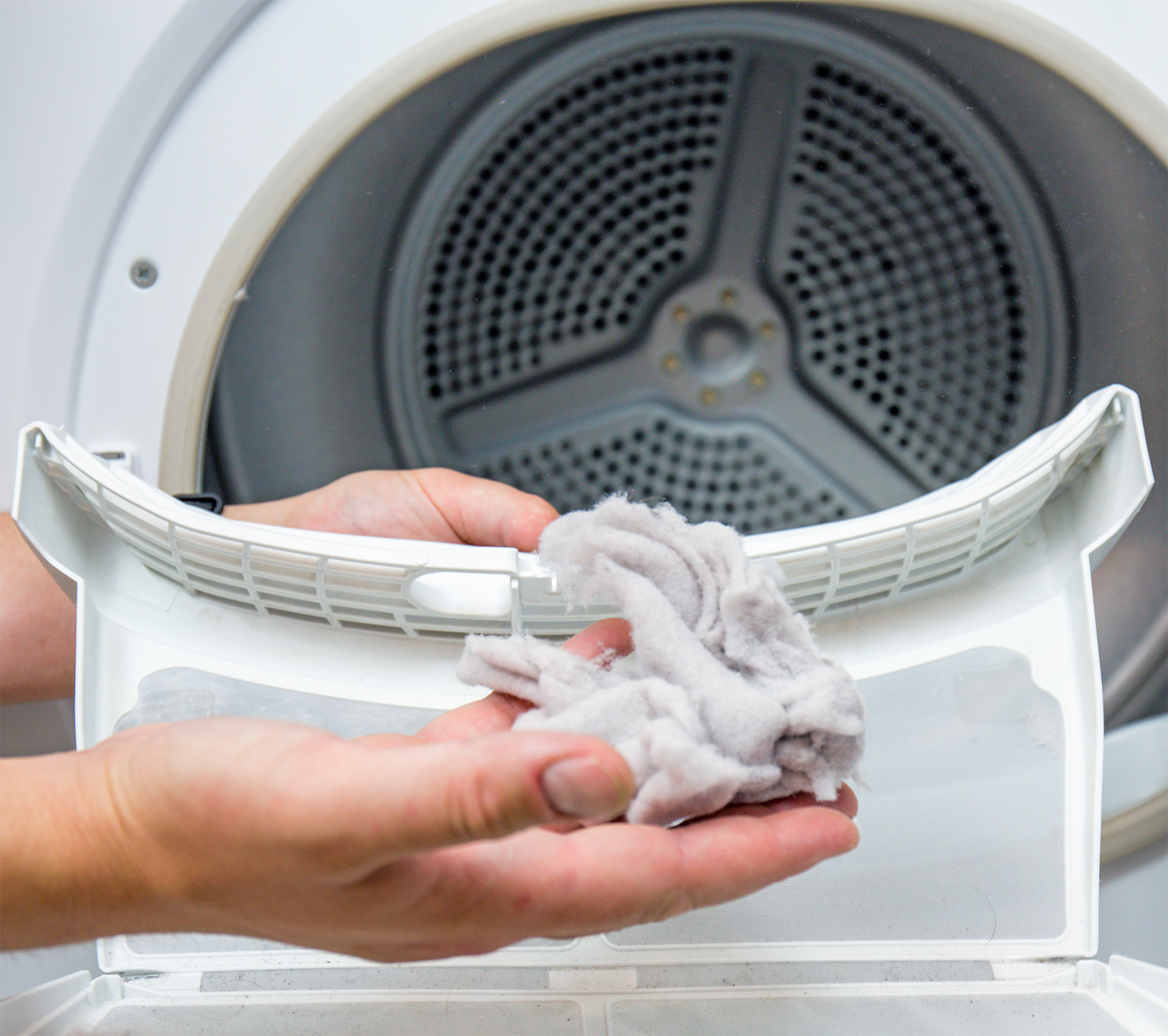 By Ron Benvenisti.
By Ron Benvenisti.
Could everyday household appliances and products that are meant to make life easier be harmful to your family? Numerous studies conducted in recent years may surprise you when it comes to this question.
Household appliances have become much a part of our daily routines. We can complete tasks and chores quicker and more efficiently than ever before. Prospective new home buyers are often particular about purchasing an apartment or house that includes updated appliances.
Recent studies have found they might be extremely convenient to most people, but they can present hidden dangers to our health — and the environment as well.
Let’s take a look at some everyday items in the house that could be doing just as much harm as they do good, according to scientists.
Tumble Dryers
Tumble dryers may be a necessary household appliance for most of us, but did you know they’re spewing out plastic? Research finds that dryers release microfibers into the air at comparable levels to those that go down the drain during the same load. The findings are based on experiments involving over 1,200 garments under typical conditions.
Minuscule fragments of clothing are blown out through air vents on tumble dryers also spurring a threat to human health. These have been found in ocean-caught fish, beer, and even placentas of unborn babies. Lab experiments suggest they damage cells.
As they float in the air, local wildlife ingest these microfibers as they settle on the land and get absorbed into the ground, ponds, lakes and rivers. Eventually, they end up on our dinner plates as they enter the food chain. Studies find that the particles also absorb harmful chemicals that leach out into the systems of any person or animal that breathes them in.
Notably, polyester, and other artificial fibers do not break down and remain in the environment for an extended period of time. Scientists have begun to urge manufacturers to install filters that can greatly reduce these harmful particles that can escape from the dryers.
The air used in tumble drying passes through a duct, or tube, and is vented directly outdoors. But there is some good news: thousands of tons of air pollution could be reduced by the use of fabric conditioners, tumble dryer sheets and smaller pores in lint filters that trap more particles.
Washing Machines
Unfortunately, washing machines also pose a threat to our health as well, say scientists. In a finding that is sure to make germaphobes across the world double-check their laundry routines, researchers at the University of Bonn in Germany say antibiotic-resistant bacteria is capable of being spread by washing machines.
The discovery was made at a local children’s hospital in which a Klebsiella oxytoca pathogen was repeatedly being transmitted to newborns. While thank G-d, no dangerous infections presented themselves in the infants, an investigation into the matter revealed the source of transmission was a conventional washing machine being used at the hospital to clean the babies’ clothes.
The bacteria were being spread to the infants via socks and beanies that had been in the washing machines. Once the washing machines had been disposed of, no additional detections were reported, effectively confirming that the transmission source had successfully been detected and eliminated.
This isn’t the first study to prove that antibiotic-resistant bacteria can take root inside washing machines, but it is the first to prove that a washing machine can then go on to spread the bacteria to humans. Researchers say these findings are very significant and illustrate the fact that antibiotic-resistant bacteria could just as easily spread via a washing machine being used in a residential home.
Microwaves
As convenient as microwave ovens are, you might want to consider cooking more of your meals in a conventional oven. Research shows that collective microwave usage may be just as bad for the environment as millions of cars.
For the study, researchers examined the total environmental impact of microwaves, all the way from being manufacture to disposal by the consumer. The researchers found that the devices emit 7.7 million metric tons of carbon dioxide into the atmosphere per year in the European Union, roughly the same amount as 6.8 million cars.
When it comes to electricity, findings show that microwaves use roughly the same amount per year — as what three large gas power plants produce. The authors say to reduce energy consumption by microwaves is to properly dispose of the microwave and to use them more efficiently.
The study focused on the average lifecycle of microwaves to get a better sense of their overall environmental impact. Findings show that the materials used to make microwaves, the manufacturing process itself, and end-of-life waste management were large factors contributing to their overall environmental impact. Due to the relatively inexpensive price and low cost replacement, microwaves, are disposing of them and other electronic devices faster than ever.
Beauty and Personal Care Products
Your home may also be containing more potential dangers for your children than you may realize. A new study finds. While we have all likely heard cautionary tales of young children ingesting harmful substances, such as beauty products, the results of this new study suggest that such occurrences are happening much more frequently than many may realize.
Results show that 64,686 children under the age of five were treated in U.S. emergency rooms due to injuries sustained by household personal care products between 2002 and 2016. Those numbers work out to approximately one child visiting an emergency room every two hours!
Children swallowing a harmful product is the most prevalent cause of injury (75.7%). The second most common occurrence is a care item contacting a child’s eyes or skin (19.35). These events usually result in the child experiencing poisoning (86.2%) or chemical burns (13.8%).
The beauty and personal care products that are causing these injuries, are ranked into the top four categories: nail care products (28.3%), hair care products (27%), skin care products (25%), and fragrance products (12.7%). Overall, nail polish remover was responsible for the highest number of emergency room visits (17.3% of all reported injuries). Additionally, more than half of the most serious reported injuries were caused by hair care goods (52.4%).
Household Dust
It’s present in all homes, behind every small corner or tiny nook the vacuum just can’t quite reach. Dust is unavoidable in our living spaces, and just as soon as we find the time to clean it all up, there is usually more on the way to take its place. Now, one study finds that bacteria living within household dust can spread antibiotic-resistant genes.
Findings show that bacteria in dust can swap their genes, which sometimes include antibiotic-resistant properties, with neighboring bacteria in nearby dust. While most bacteria found in dust are ultimately going to be harmless, the study’s authors believe these antibiotic resistant genes may potentially spread to the occasional pathogen found in dust bacteria. So, if that pathogen were to eventually make its way into a human, the subsequent illness would be much harder to treat.
Bacteria can share their genes two ways. The first, called dividing. The second method is referred to as horizontal gene transfer and occurs when a bacterium copies its own genes and exchanges them with a neighboring bacterium. Horizontal gene transfer is considered by the research team to be the primary way in which antibiotic resistant genes are spread among species.
It isn’t necessarily common for pathogens to be found in household dust but it isn’t unheard of either. These infection-causing pathogens may hitch a ride into people’s home through a variety of ways, such as on shoes, and then interact and exchange genes with existing bacteria. Thus, the study recommends dusting with a wet cloth instead of antimicrobial solutions, because these products can make bacteria more antibiotic-resistant.
Breast Cancer Risk Boosted by Everyday Items
There are possibly close to 300 toxic chemicals that may be in common items in your home right now, according to scientists. Exposure to these chemicals may increase a person’s risk of developing breast cancer, G-d forbid. The study finds these products include everything from processed foods, to lipstick and mascara, pesticides, and even furniture. The ingredients, called endocrine disrupting inhibitors, fuel hormones that trigger the disease.
Findings show that these chemicals make cells in breast tissue produce more estrogen or progesterone. Scientists combed through data on more than 2,000 chemicals examined by the U.S. Environmental Protection Agency (EPA)’s ToxCast program.
In laboratory experiments on cells, 296 raised levels of progesterone or estradiol, a form of estrogen. Over 70 percent of these substances increased the levels of both. Researchers find many of the chemicals are in additives in processed foods, such as packaged meat, pies, sweets, and snack foods.
The study authors are calling for improvements in testing to help identify potential breast carcinogens before they end up in products. They also suggest finding ways to reduce people’s exposures, particularly during the critical periods of development. This includes puberty and pregnancy when the breast undergoes important changes.
Plastic Toys
Plastic toys bring hours of entertainment to children. We are all familiar with the large collections laying on the floor of their rooms. Unfortunately, certain plastic toys also leech potentially toxic chemicals. A recent study suggests that over 100 chemicals found in plastic toys may pose health risks to children.
Regulations of potentially harmful chemicals in toys vary across countries. International regulations various lists of “chemicals of concern” in toys tend to focus on substances of known harmful properties, while ignoring hundreds of other chemicals. A team of researchers from the Technical University of Denmark (DTU), U.N. Environment, and the University of Michigan attempted to estimate the potential risks these toys carry to children.
The findings for any given chemical, the dose, route of exposure, and the length of time an exposure lasts can influence toxicity to a child. The dose of chemicals from plastic toys depend on how many toys are in the room. The researchers found that kids have about 40 pounds of plastic toys, on average. Surprisingly, models estimate that inhalation is the main route of contamination from soft plastic toys. Results also show ingestion (hand-to-mouth) comes in as a close second.
Some of the most concerning chemicals found in the study include eight fragrances, 18 flame retardants, and 31 plasticizers. Plasticizers are chemicals that manufacturers add to soft plastics to make them more bendable. Study authors note they are the most common substances in these toys. Two plasticizers in particular, butyrate TXIB and citrate ATBC, are of serious concern to the team. Both plasticizers are manufacturing alternatives for more regulated chemicals such as certain phthalates.
Until there is more regulation over all chemicals, children will have a hard time avoiding all harmful chemicals in their plastic toys. Therefore, the researchers advise the public to reduce their contact of plastic materials in general and avoid the use of soft plastic toys. Additionally, parents should ensure their child’s room has enough ventilation if they are playing indoors.


Dr. Shanik did not say that any of these are not healthy so it can’t be.
Right!
So basically we now have proof that there is a study to prove anything you want to prove.
It is common knowledge that if you’re vaccinated them there is nothing to worry about.
Especially if you also wear a blue mask .
Yup and you just showed what “that study was debunked” means